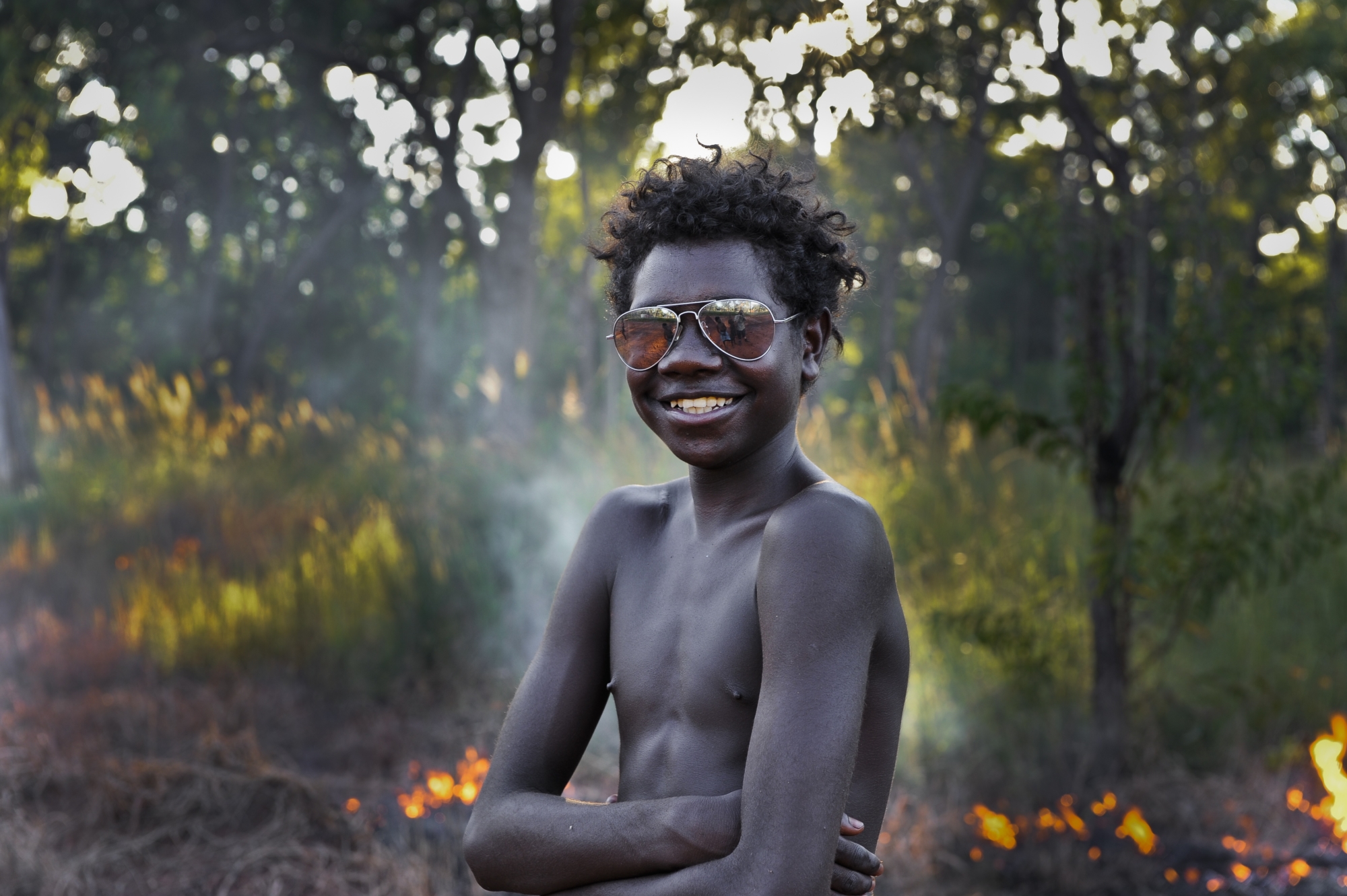David Gulpilil has one of the most distinctive voices of any contemporary Australian screen actor. As the narrator of Another Country (Molly Reynolds, 2015), an essay film about his hometown of Ramingining in the Northern Territory, his tone is rough around the edges, but intimate, open and musical at its centre. His delivery is intense yet completely unrushed as the mood shifts between wry humour, bleak observation and a gentle but insistent questioning. Apart from a brief scene in which we see Gulpilil dancing, he does not appear in the film – but his narration defines this work. Like all good storytellers, he owns the moment, and is able to draw his audience close.
Many of Gulpilil’s key roles have been built around his charismatic screen image rather than his voice. From the sublime young dancer of Walkabout (Nicolas Roeg, 1971) to the mystical elder of Australia (Baz Luhrmann, 2008), his dignified presence has brought an element of gravitas to a mixed bag of projects and, despite a relatively small number of roles in his nearly fifty-year-long career, he has achieved an iconic status among both black and white Australians. However, his screen persona, while often radiating integrity, rarely drives the story forward. Too often, he has been cast to represent an idea of Aboriginality largely constructed as something against which the central white characters can play out their respective redemptive or tragic journeys through the outback and, by extension, through various settler versions of Australian history.
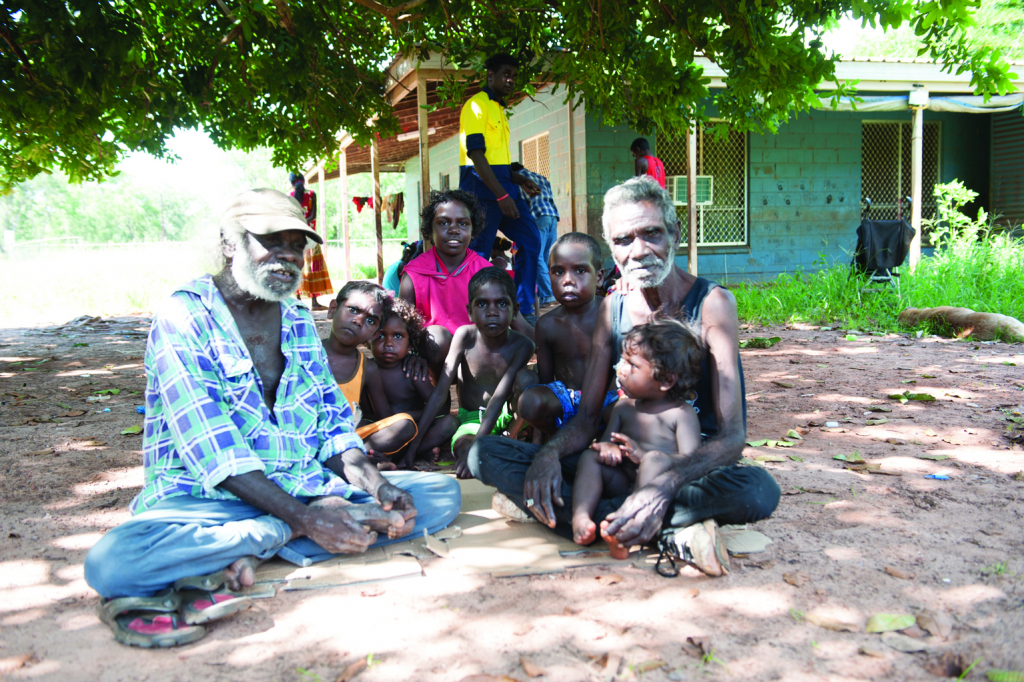
The Tracker (2002), Gulpilil’s first collaboration with director Rolf de Heer, largely followed this template, as the nameless characters played by Damon Gameau (‘The Follower’) and Gary Sweet (‘The Fanatic’) battle each other through their respective responses to Gulpilil’s perceptive but nearly wordless character (‘The Tracker’). Nonetheless, the relationship that this film built between de Heer and Gulpilil led to the development of Ten Canoes (2006), which operates under a very different dynamic. De Heer, with co-director Peter Djigirr, collaborated with people from the Ramingining community to share stories drawn from Yolngu culture and, for the most part, told in Yolngu languages. In the magical opening of Ten Canoes, the camera glides above the Arafura waterways while Gulpilil’s narration floats across the soundtrack – ‘Once upon a time, in a land far, far away …’ – only to break into a harsh laugh: ‘Nah, not like that, I’m only joking. But I am going to tell you a story. It’s not your story. It’s my story: a story like you’ve never seen before.’
When working with Aboriginal people, de Heer and Reynolds navigate the sensitive cultural politics of storytelling and authorship in a variety of ways. Edits are reviewed and approved by those represented in the films, and material is repurposed or supplemented by educational resources.
When working with Aboriginal people, de Heer and Reynolds navigate the sensitive cultural politics of storytelling and authorship in a variety of ways. Edits are reviewed and approved by those represented in the films, and material is repurposed or supplemented by educational resources. As a side project to Ten Canoes, they worked with locals to create Twelve Canoes (2008), a short-film and website[1]See <http://www.12canoes.com.au>, accessed 14 October 2015. series that provides a wealth of imagery and information about Yolngu culture, past and present, and is offered in both English and Yolngu versions. Another Country is the third and final part of Reynolds and de Heer’s ‘country suite’,[2]Laurence Barber, ‘Refracting Ramingining: Still Our Country – Reflections on a Culture’, Metro, no. 184, Autumn 2015, p. 72. following the latter’s fiction feature Charlie’s Country (2013) and the former’s documentary Still Our Country – Reflections on a Culture (2014). As has been well documented elsewhere, Charlie’s Country was initiated by de Heer as a gift of friendship to Gulpilil, who very much wanted to make another film as part of his recovery from a period of alcohol abuse and a stint in jail for assault.[3]eOne, Charlie’s Country press kit, 2014, available at <http://www.vertigoproductions.com.au/downloads/charlies_country_australian_press_kit.pdf>, accessed 16 October 2015, pp. 4–6. Charlie’s Country is not based on specific events from Gulpilil’s life, but rather dramatises some of the structural problems faced by remote communities: the obstacles that prevent people from truly being able to control their own destinies, and the blunt tools used by the police and other authorities to manage the fallout of the long history of displacement and racism. Another Country revisits these ideas but in documentary form, and unpacks them as they relate to the past, present and future of Ramingining.
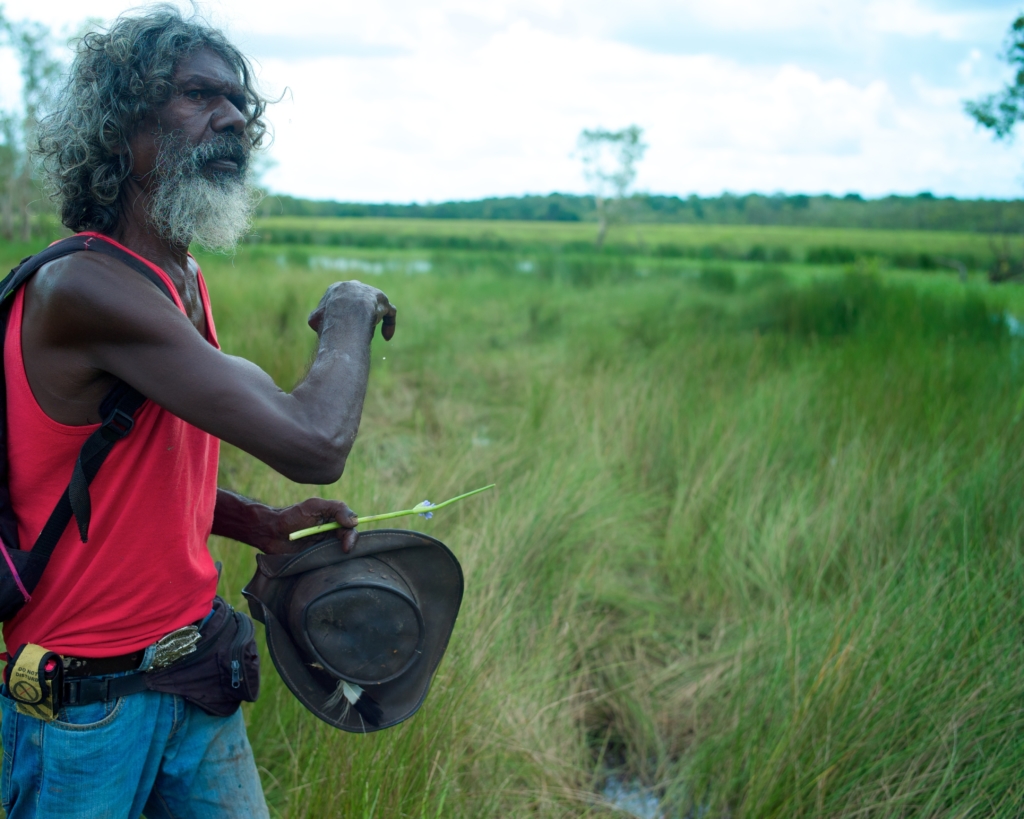
Gulpilil is credited as co-writer alongside Reynolds and de Heer, and his voice – in both the physical and cultural senses of the term – dominates this film. In a radio interview, Reynolds makes it clear that the script emerged out of discussions between the three of them:
[David Gulpilil] is a highly political individual […] He does a lot of thinking about all this sort of stuff and really finds it hard to articulate it well. And so when someone like Rolf can help kind of put it into whitefella language and expression and he hears it – because he understands English far better than he speaks it – he really does come alive with the joy of it.[4]Molly Reynolds, in ‘Rolf de Heer & Molly Reynolds on the Country Suite of Films’, Showreel, 3CR, 30 July 2015, <http://www.3cr.org.au/showreel/episode-201507301100/rolf-de-heer-molly-reynolds-country-suite-films>, accessed 16 October 2015.
While he may not have crafted the careful rhythms and pithy aphorisms of the script, Gulpilil’s performance – embodying, as it does, his life experiences – and his passion for the project complete his authorship of the resulting film.
It is commonly said of figures like Gulpilil that they are ‘caught between two worlds’. This romantic-sounding phrase may contain a grain of truth, but can also be shorthand for a complete lack of understanding of the realities of that ‘other’ world. Another Country reveals just how interconnected contemporary Ramingining actually is with mainstream Australia as well as how the power discrepancy between the two societies means that the effects of those interconnections are largely negative. As Gulpilil explains at the start, in striking counterpoint to the opening of Ten Canoes, ‘This film is more about you than about me […] it’s about what happened when my culture was interrupted by your culture.’
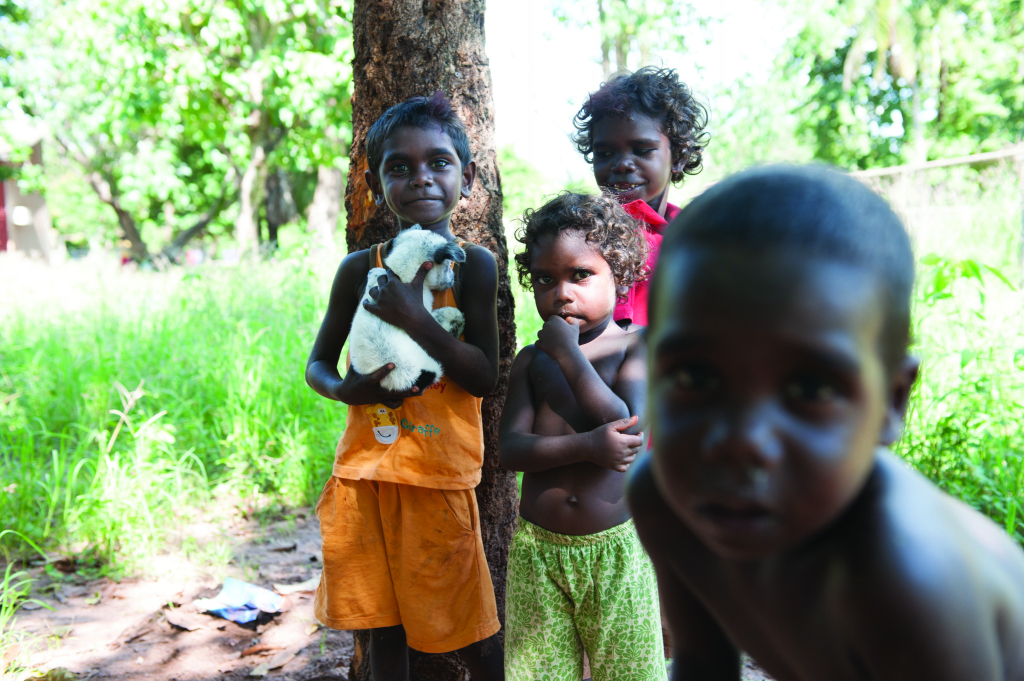
The use of the verb interrupted rather than, say, invaded, is a way of reframing the debate, at least within the space of the film, in terms of an ongoing, unfinished conversation. Listening, language and conversation are key ideas in Another Country. Interruption can be a mark of equality: friends may feel free to speak over one another in a rapid-fire sharing of ideas or jokes. In more formal conversations, interruption indicates rudeness: a thoughtless dismissal of the other’s feelings or the worth of their words. There are circumstances, however, in which one speaker interrupts another – perhaps unconsciously – because they simply cannot bear to hear an alternative point of view, and this is the kind of interruption, on a cultural level, that the film examines.
The use of the verb interrupted rather than, say, invaded, is a way of reframing the debate, at least within the space of the film, in terms of an ongoing, unfinished conversation. Listening, language and conversation are key ideas in Another Country.
Ramingining is not a traditional centre of Yolngu culture. The town was created in the 1970s as a new settlement for people who had been moved on from other places, such as missions that were closed down, or cattle stations that ceased to operate. As Gulpilil explains, for most Australians it is cheaper and quicker to fly to London than to travel to Ramingining, which is only accessible by road in the dry season. ‘Why is it there? There’s no work, no facilities, no future.’ At least the missionaries learned the local languages, and the cattle stations offered employment. There is a sense of arbitrariness to Ramingining’s existence, as people from different clans, who speak different languages and have different cultures, all live together, causing tensions that are exacerbated by the gradually increasing population.
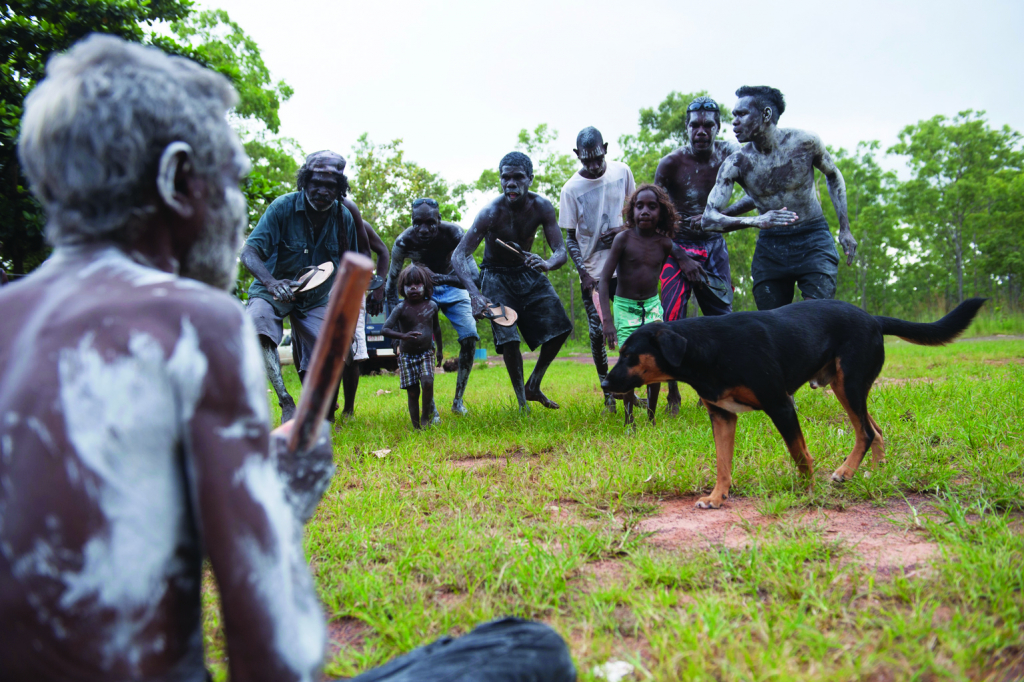
Gulpilil, de Heer and Reynolds understand that it is just as difficult for outsiders to imagine a conceptual pathway into the life of this community as it is to travel there physically, and so the film sets out to provide some signposts. As the narration weaves its way through the history and economy of Ramingining, the camera records the daily rhythms of the place and its people. Cut together at an unhurried pace from observational footage that, for the most part, eschews close-ups and interior shots, the images sometimes illustrate the words narrated by Gulpilil, and sometimes provide ironic or questioning counterpoints. Gradually, we are led to understand that our first assumptions about what we are watching are most likely incorrect.
For instance, near the start of the film we see a kangaroo leisurely jumping through the hazy streets – a picturesque scene that elicited gentle chuckles from the audience at the screening I attended. The laughter quickly stopped, however, as the kangaroo finds itself trapped in a yard between a cyclone fence and a pack of barking dogs. The roo starts to fret, throwing itself in panic against the fence. People gather, and stand around watching, but no-one attempts to call off the dogs. Instead, a young man picks up a long rod from the ground and throws it, spear-like, at the animal, knocking it out. He finishes the job with a few quick blows to the head, and hoists the catch over his shoulder to take it away to cook.
Hunting and other traditional practices may be integrated into the flow of daily life, but people in Ramingining can’t live as hunter-gatherers. They are dependent for food on the one store in town, which is serviced by a weekly delivery that arrives by barge and truck, weather permitting. The store carries some fresh food but also a large variety of much cheaper junk food and soft drink, leading to high levels of obesity-related diseases such as diabetes.[5]See Australian Bureau of Statistics, ‘Australian Aboriginal and Torres Strait Islander Health Survey: Biomedical Results, 2012–13’, 10 September 2014 <http://www.abs.gov.au/ausstats/[email protected]/mf/4727.0.55.003>, accessed 19 October 2015.
Clothing and electrical goods make up the rest of the stock, which can be purchased through the BasicsCard system introduced as part of the Northern Territory National Emergency Response, commonly known as the ‘intervention’. Over A$170,000 per week passes through the store and out of the community. Housing and other buildings are constructed by fly-in workers because it is cheaper than employing locals, which compounds the sense of frustration among Ramingining residents who would prefer to work than live on welfare.
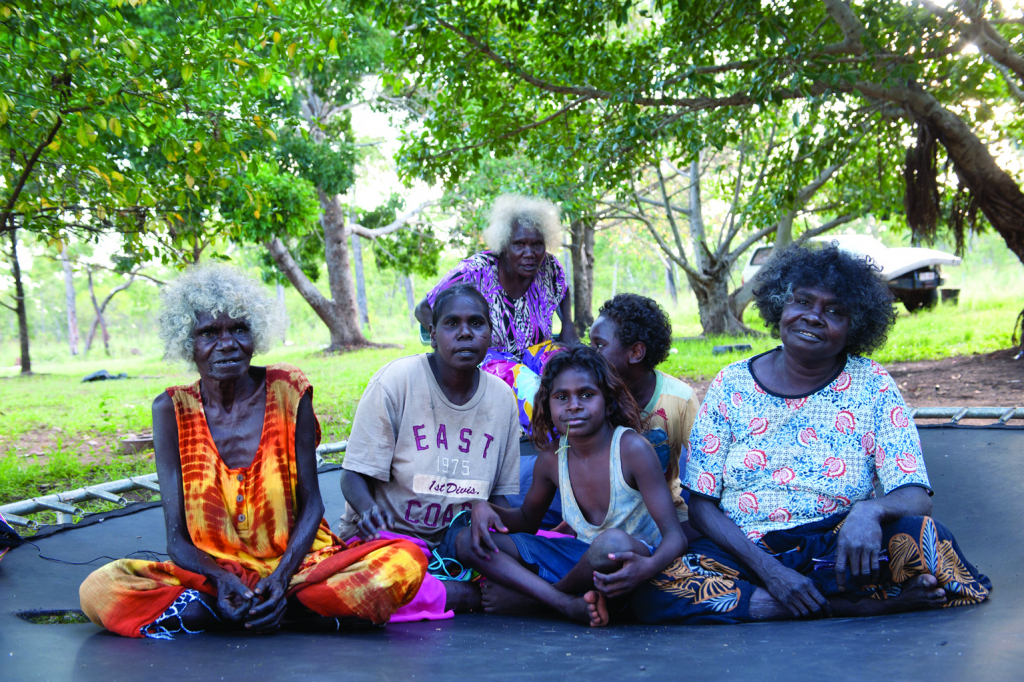
Another Country describes how the town ‘doesn’t work blackfella way, and doesn’t work whitefella way’. One by one, the film looks at how elements of Western culture have ‘interrupted’ traditional culture: money, which causes stress in communities where there is a small economy and an obligation to share resources; rubbish, which is choking the environment and cannot be properly processed; mass-produced goods, which distort the sense of time needed to make things in traditional ways; ganja, boredom and police. Indeed, Gulpilil describes the lives of Billy and Bobby, two middle-aged men shown walking together. They have little to occupy themselves with. Both are good painters but, since the global financial crisis, struggle to sell their work. Both are elders but receive no respect outside their culture. Both speak English ‘okay but not great’, as it is their fourth or fifth language. What are they going to do? What jobs could they find? How can they be part of the conversation? The legacy of the missionaries adds another element to the mix. We witness a Good Friday parade – a young man carries a cross through the rain, while kids do backflips in the mud around him and a group of women sway in time to the music on an American-accented recording of a service. Is it possible, the film asks, to even imagine a time before Jesus, the government and Centrelink?
As fascinating and thought-provoking as it is to explore these ideas in the company of David Gulpilil, like all essay films, Another Country favours one point of view and it can be frustrating that we are not able to hear directly from the people being spoken about, whom we observe on screen. But the film is a call to action as much as a rumination, and it certainly made me hungry to explore other ways in which Yolngu people are using media to describe their place in Australian life. The forthcoming docudrama Black As,[6]See <http://rebelfilms.com.au/black-as-production/>, accessed 14 October 2015. created by David Batty of Bush Mechanics fame alongside Ramingining locals, promises a level of humour and energy stylistically far removed from this reflective and sobering film. As Reynolds herself has noted, Ramingining locals are increasingly using digital cameras, phones and the internet to make their own films, in their own voices. Hopefully, Another Country will prompt Australians to listen more carefully, so that this interrupted conversation can resume on an equal footing.
Endnotes
| 1 | See <http://www.12canoes.com.au>, accessed 14 October 2015. |
|---|---|
| 2 | Laurence Barber, ‘Refracting Ramingining: Still Our Country – Reflections on a Culture’, Metro, no. 184, Autumn 2015, p. 72. |
| 3 | eOne, Charlie’s Country press kit, 2014, available at <http://www.vertigoproductions.com.au/downloads/charlies_country_australian_press_kit.pdf>, accessed 16 October 2015, pp. 4–6. |
| 4 | Molly Reynolds, in ‘Rolf de Heer & Molly Reynolds on the Country Suite of Films’, Showreel, 3CR, 30 July 2015, <http://www.3cr.org.au/showreel/episode-201507301100/rolf-de-heer-molly-reynolds-country-suite-films>, accessed 16 October 2015. |
| 5 | See Australian Bureau of Statistics, ‘Australian Aboriginal and Torres Strait Islander Health Survey: Biomedical Results, 2012–13’, 10 September 2014 <http://www.abs.gov.au/ausstats/[email protected]/mf/4727.0.55.003>, accessed 19 October 2015. |
| 6 | See <http://rebelfilms.com.au/black-as-production/>, accessed 14 October 2015. |
